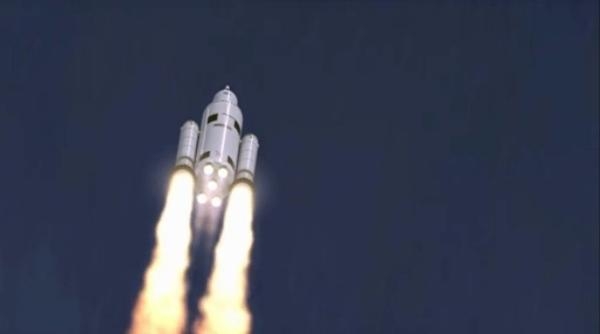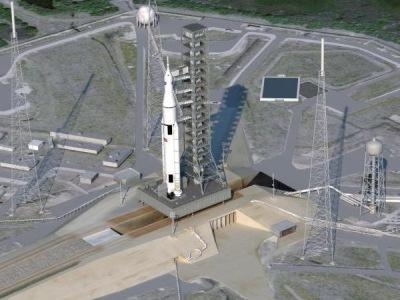Tue, Dec 25, 2012
Agency Says It Is Ready To Start Construction On The First Booster
The team designing America's new flagship rocket has successfully completed a major technical review of the vehicle's core stage. NASA's Space Launch System (SLS) will take the agency's Orion spacecraft and other payloads beyond low-Earth orbit. The core stage preliminary design review (PDR) was held Thursday at NASA's Marshall Space Flight Center in Huntsville, AL, and included representatives from the agency and The Boeing Co. Boeing's Exploration Launch Systems in Huntsville is the prime contractor for the core stage and its avionics. Marshall manages the SLS Program.

"Passing a preliminary design review within 12 months of bringing Boeing on contract shows we are on track toward meeting a 2017 launch date," said Tony Lavoie, manager of the SLS Stages Element at Marshall. "We can now allow those time-critical areas of design to move forward with initial fabrication and proceed toward the final design phase -- culminating in a critical design review in 2014 -- with confidence."
The first flight test of the SLS, which will feature a configuration for a 70-metric ton lift capacity and carry an uncrewed Orion spacecraft beyond the moon, is scheduled for 2017. As the SLS evolves, a two-stage launch vehicle using the core stage will provide a lift capability of 130-metric tons to enable missions beyond low-Earth orbit and to support deep space exploration.
The purpose of the PDR was to ensure the design met system requirements within acceptable risk and fell within schedule and budget constraints. An important part of the PDR was to prove the core stage could integrate safely with other elements of the rocket's main engines and solid rocket boosters, the crew capsule and the launch facilities at NASA's Kennedy Space Center in Florida. Core stage designers provided an in-depth assessment to a board of engineers comprised of propulsion and design experts from across the agency and the aerospace industry.

"Each individual element of this program has to be at the same level of maturity before we can move the program as a whole to the next step," SLS Program Manager Todd May said. "The core stage is the rocket's central propulsion element and will be an optimized blend of new and existing hardware design. We're building it with longer tanks, longer feed lines and advanced manufacturing processes. We are running ahead of schedule and will leverage that schedule margin to ensure a safe and affordable rocket for our first flight in 2017."
The core stage will be built at NASA's Michoud Assembly Facility in New Orleans using state-of-the-art manufacturing equipment. The plant continues modifying its facilities and ordering materials for construction of the rocket. Michoud has built components for NASA's spacecraft for decades, most recently, the space shuttle's external tanks.
(Images provided by NASA)
More News
Also: Vertical Flight Society, NBAA Maintenance Conference, GA Honored, AMT Scholarship For the first time, students from Embry-Riddle’s Daytona Beach, Florida, campus took t>[...]
Hazardous Weather Information Summary of significant meteorological information (SIGMET/WS), convective significant meteorological information (convective SIGMET/WST), urgent pilot>[...]
"The need for innovation at speed and scale is greater than ever. The X-62A VISTA is a crucial platform in our efforts to develop, test and integrate AI, as well as to establish AI>[...]
(FAA) Inspector Observed That Both Fuel Tanks Were Intact And That Only A Minimal Amount Of Fuel Remained In Each Analysis: According to the pilot, approximately 8 miles from the d>[...]
“Pyka’s Pelican Cargo is unlike any other UAS solution on the market for contested logistics. We assessed a number of leading capabilities and concluded that the Pelica>[...]
 Airborne-Flight Training 05.09.24: ERAU at AIAA, LIFT Diamond Buy, Epic A&P
Airborne-Flight Training 05.09.24: ERAU at AIAA, LIFT Diamond Buy, Epic A&P ANN's Daily Aero-Term (05.07.24): Hazardous Weather Information
ANN's Daily Aero-Term (05.07.24): Hazardous Weather Information Aero-News: Quote of the Day (05.07.24)
Aero-News: Quote of the Day (05.07.24) NTSB Final Report: Cessna 150
NTSB Final Report: Cessna 150 Aero-News: Quote of the Day (05.08.24)
Aero-News: Quote of the Day (05.08.24)




